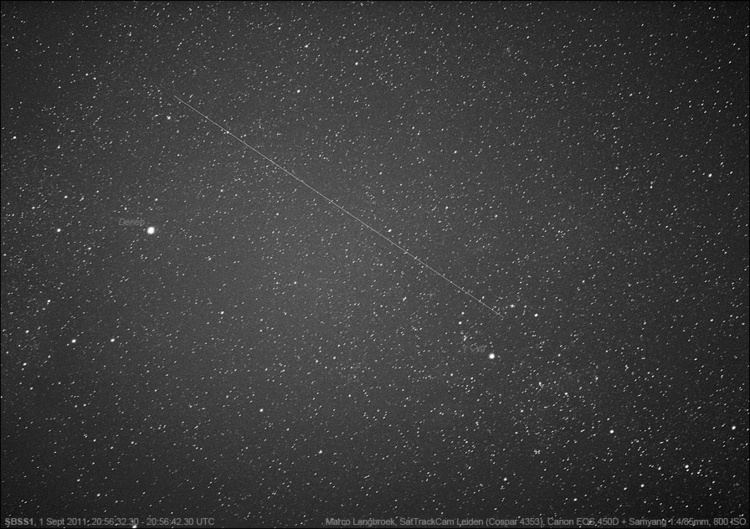 | ||
The Space Based Space Surveillance (SBSS) system is a planned constellation of satellites and supporting ground infrastructure that will improve the ability of the United States Department of Defense (DoD) to detect and track space objects in orbit around the Earth. The primary SBSS contractor, Boeing, characterizes some orbiting space objects as, "Potential future threats to the United States' space assets."
Contents
The SBSS development work is being conducted in coordination with the Space Situational Awareness Group in the Space Superiority Systems Wing of the United States Air Force. The commander of the Space Situational Awareness Group believes the SBSS satellite operations center, "Will transform Space Situational Awareness by providing a gateway to a responsive, taskable sensor. This capability is key to enabling the event-driven operations concept of the future."
Pathfinder satellite
The first "pathfinder" satellite of the SBSS system was successfully placed into orbit on board a Minotaur IV rocket on September 25, 2010. Originally, the launch was scheduled for December 2008 but was rescheduled for Spring of 2009, and again delayed until 22 Oct 2009. The launch delays were caused by problems with the booster, and not the satellite itself. A launch expected for July 8, 2010 was also postponed. The program cost $823 million, including satellite, payload, launch, and ground support. (The satellite and payload contracts to Ball Aerospace are approximately 40% of the total.) It is designed to examine every spacecraft in geosynchronous orbit at least once a day.
The SBSS pathfinder satellite has a 30 cm telescope on a two axis gimbal with a 2.4 megapixel image sensor and has a projected mission duration of five and a half years.
Geosynchronous Space Situational Awareness Program
The first two GSSAP spacecraft were launched in 2014, and a further two will be launched in 2016. The first two were built by Orbital Sciences Corporation; their capabilities and development and construction budgets are classified. They operate in "near-geosynchronous orbit," The first launch was scheduled for 23 July 2014 aboard a United Launch Alliance Delta IV rocket..
Even during the testing process these satellites were pressed into early service to fulfill critical needs.
